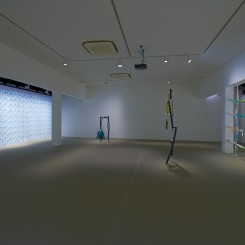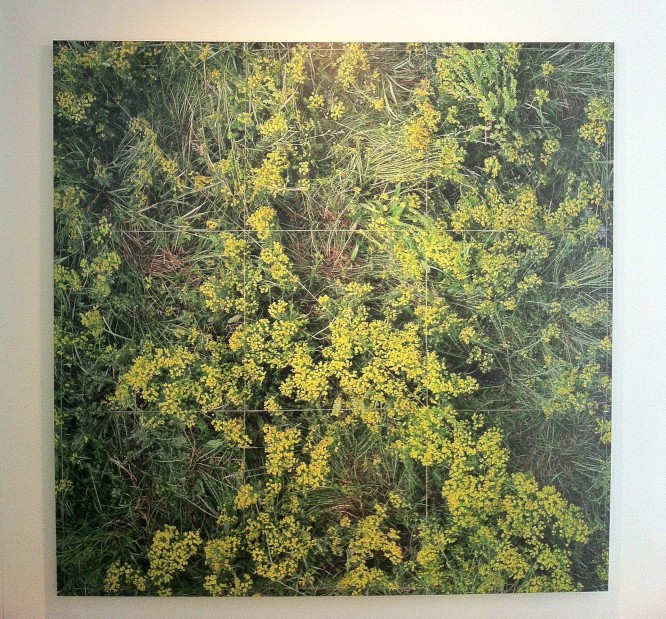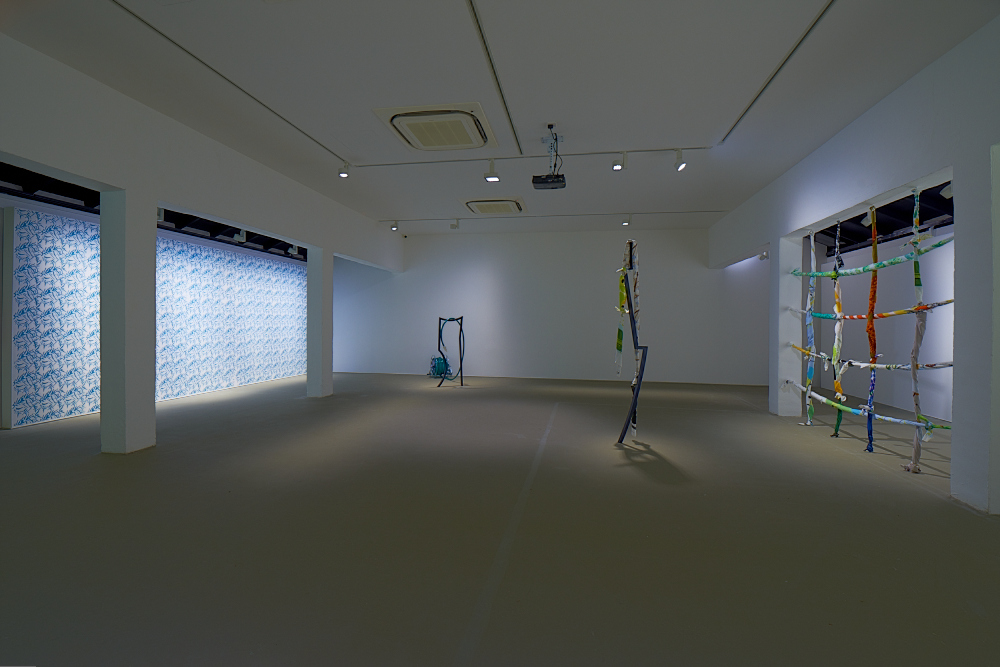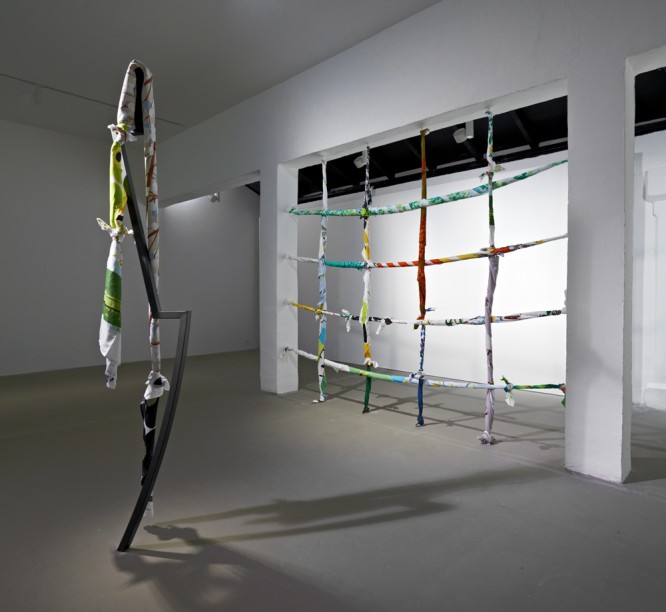The Distracted Gardener & The Plumbing Subverter: Edward Clydesdale Thomson Solo Exhibition
Yeo Workshop (Gillman Barracks, 1 Lock Road 01-01, Singapore 108 972) Sep 7—Nov 23, 2013
Contemporary art exhibitions often assert that urban environments increasingly influence human development and experience; man’s relationship with nature is a far less frequent topic of exploration. Edward Clydesdale Thompson’s intense engagement with landscape and gardens through art therefore felt somewhat novel here. His practice takes as its starting point 19th-century European design and decor, bringing these traditions into the present moment through the use of different media, including sculpture, printing and photography. Thompson’s work is concerned with identity—the ways in which people imagine themselves to be, and how this is reflected politically, economically or ideologically, for example, through landscape.
The most striking work here was, for me, “Selbstzweck” (meaning “end in itself”, 2009). Traveling frequently to different countries one comes to notice, literally, the ground beneath one’s feet. In Beijing’s dense, urban environment, there is little natural surface to walk on—the grass between buildings (when it exists at all) is thin, dry and artificial. In London, an older–looking city with a higher cost of living, the grass is kept short in its numerous private residential parks, but has nonetheless grown thick. The exclusive nature of the squares in which this grass is cultivated results in a limited number of feet treading on it, which, combined with the city’s temperate climate, helps keep its blades damp and soft. In Singapore, the plants covering the ground in public places tend more towards the turgid, tropical vegetation that signifies its equatorial location. The sorts of litter, too, or lack thereof found on natural ground and in the shrubbery also tell one about a place and, perhaps only vaguely, its social mores, relative wealth and politics. Thus a mere patch of urban green space becomes an index of its context, history and inhabitants. “Selbstzweck” is a large square photographic print displaying a birds-eye view of mid-length, unruly grass and yellow weeds growing on public ground in Berlin, Germany.
In contrast, the print piece “In a Green Shade (Fritids no.2)” (2011) seemed more purely decorative. A grey, traditional country scene of a byway lined with trees has been overlaid with different shapes abstracted from leaves and foliage printed in different colors. They cluster over the surface of the underlying image fervently, as if to evoke the imaginative sensations attached to country walks and natural visual stimulae. A further green and blue print occupies a back wall. Bolted to it is a garden hose pipe reel, complete with a green hose, the nozzle and initial length of which unwinds to rest languidly in the crook of a metal sculpture (“The Plumbing Subverter,” 2013) protruding a little from its front. This link between the canvas, its visual content and the object results in both a witty and a slightly surreal abstraction. The hose retains its original functional identity and form, yet finds itself inert in a graphic environment. Unable to make a convincing leap into sculpture, the hose remains awkwardly there, anchored, perhaps, to pedestrian horticulture and ideals. The undertones of imposition and control—of plant life and people subject to social cultivation—are delivered through the domesticated forms of a languid hose and soft, visually pleasing scarves which have been knotted between two pillars in a space nearby.
Thompson required complex CGI design to create the contorted sculptures on display here, many of which appear different from every angle and evade photography. The artist calls himself a modern-day “topiarist”—the ‘limbs’ of his sculpture make for an apt contemporary rendition of the fantasies attached to traditional topiary art (fashioning imaginative shapes from trees). This connection does not, however, prevent the sculptures from being highly compelling works in themselves. Their strange twists, and the balance held in spite of them, has at times an anthropomorphic quality, like figures standing at jaunty angles; their physical attitudes carry a great, taut sense of movement in space. One becomes aware of one’s own bearing in relation to them, a conscious intention on the part of the artist. The addition of a string of knotted Marimekko scarves draped over one of the works evokes, again with a hint of sardonic wit, a standing figure. Matimekko also mass-produces its designs, thus allowing for a reading of this as a reference to a certain kind of consumer culture.
In sum, this exhibition —it is related perhaps too briefly here—is a sophisticated one; between the wall-mounted works and sculptures lies a refined physical presence. The avenues of interpretation and references one might extract from it are numerous. The physical space and figures cultivated for this commission are themselves (of course) not unlike a garden one might wish to explore further. This sense of potential is accompanied by the possible metaphor of the artist as gardener, and vice-versa. Also in play is the absolute, eternal indifference on Nature’s part to Man’s interference in pursuit of form—an idea that may or may not be applied to wider aesthetic culture.



